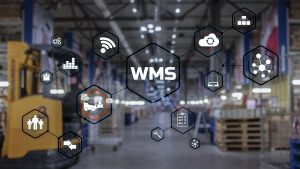Editor's Note: Take a look at our featured best practice, Cost Segregation Study: Multiple Property Class Analysis (Excel workbook). Accountants, accounting firms, and real estate property owners can all benefit from this cost segregation study (CSS) template. It makes the estimated benefit easy to figure out and has flexible assumptions for high level or detailed segregation analysis. You get a summary of cost [read more]
How to Automate Warehouse Management
* * * *

This unprecedented spike in sales over the years has made business owners rethink how to manage warehouses.
Warehouses are now seen handling thousands, even millions of stock-keeping units (SKU) daily. Manual operations have resulted in high costs, substantial human error, and unbearable inefficiency.
The need to automate the management of warehouses became inevitable. Digitalization, artificial intelligence, and software have become a massive part of warehouse automation. And because of these modern wonders, warehouse management became more straightforward, efficient, and profitable.
So, it doesn’t matter what kind of warehouse you’re handling, whether raw material, finished goods, temperature control, or cross-dock, automation can provide the seamless and accurate operational flow you will need. With that said, here’s how you can automate your warehouse management:
1. Employ WMS Software
A WMS or warehouse management system software is a tool that will allow you to control and manage your warehouse at all stages of the process, from receiving up to the endpoint of distribution. A WMS integrates many applications to handle labor, inventory, and sales fulfillment seamlessly. You can ensure that your warehouse will always be stocked adequately, fast-moving items will be replenished quickly, and forecasting will be a breeze with WMS software.
This technology can speed up the operation, eliminate human errors, increase efficiency and decrease operational costs, thereby increasing the bottom line of the company’s warehouse. To know more about this impressive technology, click here for WMS software.
2. Utilize AGV Or Automated Guided Vehicles
AGVs are industrial vehicles that use the SLAM (simultaneous localization and mapping) technology to navigate their environment and adapt to the existing conditions to operate safely, decreasing workplace injuries and accidents.
AGVs are used indoors and outdoors to assist in receiving, sorting, and stacking thousands of items daily. These self-driving vehicles are equipped with scanning technologies to quickly identify items, including relevant information about them, such as manufacturing date, best by date, and lot number.
AGV’s are effective in speeding up warehouse organization because at one scan they can pinpoint locations precisely and effectively by applying the FIFO or (first in, first out system). Utilizing them eliminates manual pallet organization and sorting, which caused many workplace injuries.
3. Use RFID Solution

RFID uses microchips with stored data to track inventory in warehouses and organize receiving and distribution of thousands, even millions of SKUs daily. Unlike the bar code, the item need not be at the line of sight, making it labor efficient and accurate.
4. Take Advantage of QR or Quick Response Code
You probably see QR codes everywhere now. Since its inception in Japan in the mid-90s, it hasn’t stopped revolutionizing many industries and even upgraded further with the rise of modern smartphones with built-in cameras.
Unlike before, you only see QR codes in huge factories of cars and logistics warehouses; Today, QR codes are now seen at restaurants, supermarkets, banks, and even toll plazas when you travel. Warehouses can benefit from QR code because it makes the management of warehouses less time-consuming and more accurate.
More importantly, a QR code increases customer satisfaction because it gives customers real-time information about the status of a product they purchased, whether it has been shipped, departed the warehouse, or is in transit.
The beauty of the QR code is that it can store more information in lesser space, unlike the bar code. Even if the QR code is 30% damaged, the device can still read it, and it’s 360 degrees scannable, meaning you don’t have to be directly aligned to it to be read. Vital customer information can now be placed on the box without revealing the customer’s identity, ensuring a higher level of confidentiality and protection for your customers.
Conclusion
As years progress, many challenges continue to sprout and test many businesses. Technology has provided solutions to strengthen the resiliency of many enterprises. These solutions have significantly helped in improving operational flow, increasing work output, and elevating the customer experience. The stellar results increased the profits of many companies as their bottom line expanded with the reduction of operational expenses achieved through the implementation of technology.

Do You Want to Implement Business Best Practices?
You can download in-depth presentations on 100s of management topics from the FlevyPro Library. FlevyPro is trusted and utilized by 1000s of management consultants and corporate executives.
For even more best practices available on Flevy, have a look at our top 100 lists:
- Top 100 in Strategy & Transformation
- Top 100 in Digital Transformation
- Top 100 in Operational Excellence
- Top 100 in Organization & Change
- Top 100 Management Consulting Frameworks
These best practices are of the same as those leveraged by top-tier management consulting firms, like McKinsey, BCG, Bain, and Accenture. Improve the growth and efficiency of your organization by utilizing these best practice frameworks, templates, and tools. Most were developed by seasoned executives and consultants with over 20+ years of experience.
Readers of This Article Are Interested in These Resources

|
|
145-slide PowerPoint presentation
|
|
Excel workbook
| |||
About Shane Avron
Shane Avron is a freelance writer, specializing in business, general management, enterprise software, and digital technologies. In addition to Flevy, Shane's articles have appeared in Huffington Post, Forbes Magazine, among other business journals.
Top 10 Recommended Documents













